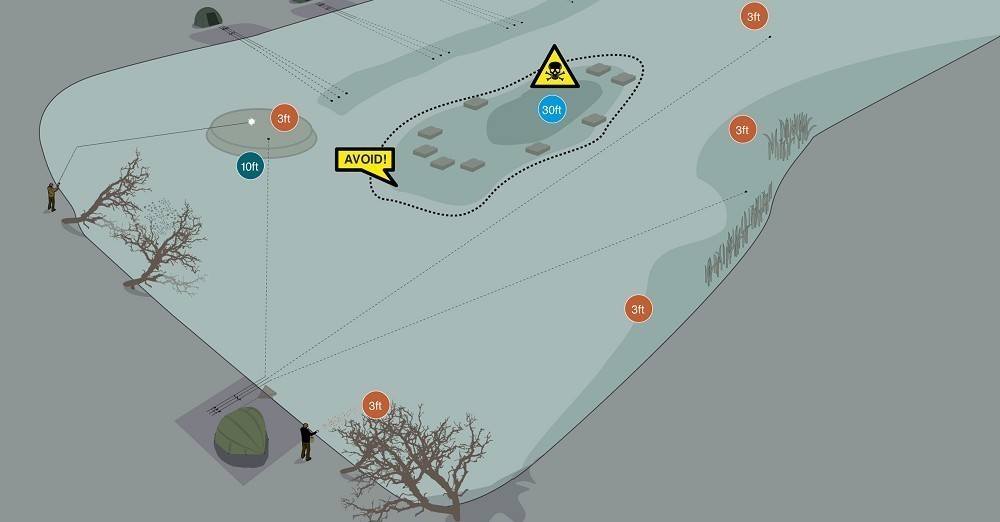
Where to find the carp this winter
The key areas of a lake you either need to head for or totally avoid
As temperatures drop, carp are active for shorter periods during each 24hr cycle and often become very localised and tightly clustered. Factors such as temperature, air pressure, dissolved oxygen, light levels and natural food availability and more all combining to encourage carp to be more or less active.
Accurate location becomes even more important than at any other time of year, and there can be long periods where huge areas of the lake are completely devoid of fish. In the most extreme conditions, carp have an incredible ability to find stable, protected surroundings in places we do not even realise they can get to. Experienced fishery management teams will recall countless stories of finding almost a whole lake’s carp population tucked into small undercuts hollowed out beneath the bank or along island margins in places we could never find them let alone fish for them.
Careful observation is the best way of tracking down winter carp. Even when almost completely inactive they will periodically roll or head and shoulder, particularly at dawn and dusk – similar to us having a stretch and a scratch when stirring after a period of slumbering.
Between November and March, if you see one carp show it’s highly unlikely it is on its own. Casting baits anywhere where you see definite signs of carp is a very big step to catching winter carp. If a hookbait is close to even sluggish carp there is a good chance it will be taken at a time of the day or night the carp become more active.
Plateau
Try presenting hookbaits close to any major depth change such as a drop-off or plateau. Carp change the depth and position they sit in the water depending upon the weather conditions.
Silty areas
On calm, sunny days, look for bubbling over silty areas. Silt retains warmth and always contains natural food.
Long-range
On larger, more featureless venues such as pits and reservoirs, carp can congregate towards the middle of the venue, often putting them at substantial range.
Reedbeds
Reedbeds are one of the best places to find carp during the winter months. They offer warmth, protection and food. You often need to fish right up tight against a reedbed, so use a solid PVA bag as it’ll offer the best presentation.
Weedbeds
Dying weedbeds retain warmth and food and for a long time it’s been believed that the biggest areas of weed often hold carp during the winter, but according to Nigel Sharp, on line-dragged gravel pits, these are the areas to avoid.
Wind direction
Carp often gather off the back of a cold wind, whereas the water is less chilly from being mixed with cool air.
Snags
Any substantial snags above or below the water will hold carp through the winter months. Areas amongst snags or beneath tree canopies without leaf litter on the bottom suggest carp are present and have kept the bottom clean.
Dead lily pads
These are a form of snags and as a result they offer cover for the carp. They also retain some warmth and on places such as Yateley’s Pad Lake, they are one of the key winter holding areas.
Bays
A big percentage of a lake’s carp population can be tucked up tightly into small bays or corners, particularly if well protected by tree cover from cold winds from the north and east.



